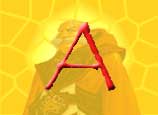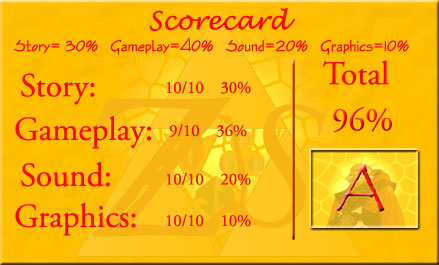Zeldasages.com review by Webmaster Bob

Having passed his final exam, our hero was ready to receive his engineering certificate from Princess Zelda herself. Little does he know the ceremony will turn from just another mundane royal activity into a quest revive the dead.
Story
Spirit Tracks has an absolutely stunning story full of twists, turns, and even a good bit of humor. You begin the game simply enough on a quest to retrieve your engineering certificate, thus allowing you to operate your train without the assistance of a mentor. Of course, this doesn’t exactly go over as planned for our hero. Zelda asks Link to sneak her out of the castle so that she may see what exactly is causing the “spirit tracks” to disappear. This, however, turns from a quick investigation to Zelda’s murder. Yes, Zelda dies in the first hour of the game; isn’t that just peachy. Without going too heavily into story specifics, Spirit Tracks ultimately turns into a quest to restore the “Spirit Tracks”, retrieve Zelda’s body so she may once again join the ranks of the living, and defeat the evil demon Malladus.
Spirit Tracks story is presented with loads of humor and allusions to Link and Tetra from Wind Waker and Phantom Hourglass. It’s revealed fairly early on that the setting for Spirit Tracks is the “new land” Link and Tetra set out to find after the events of Wind Waker. You’ll see one familiar face, Niko, in addition to third generation iterations of Linebeck, Beedle, and of course Link and Zelda. The story shows close ties to Hyrule, and, although never explicitly stated, it can be well assumed the world of Spirit Tracks was simply dubbed a new Hyrule. The game story runs very fluidly and will keep you on the edge of your seat. The story is much darker than Wind Waker and Phantom Hourglass and pits Link and Zelda against incredibly difficult to muster circumstances. My only comment is a portion of the ending is slightly predictable given a large number of little hints you’ll see throughout the course of the game, but it will leave you deeply satisfied for having played Spirit Tracks. From start to finish, a perfectly executed plot 10/10.
Gameplay
I won’t bore you with information on touch controls, however in Spirit Tracks they are far better executed than in Phantom Hourglass. You won’t find any small glitches or misinterpreted commands as far as the stylus control is concerned. As a matter of fact, there have been a number of improvements to help you see what exactly you are selecting, such as a Wind Waker style yellow arrow pointing at enemies and objects.
There are three huge additions to the game, the Spirit Train, the Pan Flute, and, surprisingly, playing as Zelda. The Spirit Train, as you’ve expected, is Link and Zelda’s way from getting from point “A” to point “B”. Although this sounds a bit mundane Spirit Tracks does an excellent job of keeping the action rolling. You’ll regularly be defending yourself from enemies, switching tracks to get away from one-hit-kill Phantom Train, and all manners of engineering. The train can seem a bit slow at times even when in the highest gear setting, however there are warp points stationed across Hyrule allowing you fast travel to any realm in the game. Also, just as you could do with your boat in Phantom Hourglass, you can pimp your train. Train parts can be purchased from Linebeck III to turn your Spirit Train into a number of odd interesting vehicles, including a dragon train similar in some respects to Wind Waker’s King of Red Lions. Trains aside, however, music makes a return to Zelda with the addition of the Pan Flute. You’ll use the Pan Flute to play songs to heal yourself, discover treasures, open doors, and restore the Spirit Tracks. Using the Pan Flute is as simple as blowing into the DS microphone and moving your stylus across the screen to switch notes. Most of the songs are fairly easy, but at times you’ll be playing alongside temple sages to restore the Spirit Tracks, during which you’ll need to hit proper pitch and in time. My only complaint is if you are using a first generation DS Lite system, you will have problems with the Microphone input for the Pan Flute. I found that switching to a friend’s new DSi fixed the issue, but it was a tad annoying. I found a good work-around to get pan fluting to work on the DS Lite, namely blowing while making the sound of an stereotypical blowing noise, but it’s something Nintendo should have taken into consideration. All that aside one of the most interesting aspects of Spirit Tracks is your ability to play as Zelda. Zelda can posses Phantom of different types in the Spirit Tower, giving her the ability to break through rocks, light torches, warp to other areas of the tower, etc. Although you can only control her during your visits to the Spirit Tower and the final battle, these periods turn more into fun gameplay than a chore. Zelda is fairly easy to control and makes for a number of really neat puzzles and enemy strategies.
Just as well, Spirit Tracks is much more difficult than Phantom Hourglass. To be honest, Spirit Tracks was the first Zelda game I’ve played in a while that actually felt like a Zelda game. The puzzles can, at times, be real head scratchers. In addition, the difficulty was beefed up substantially. I think the best way to describe the difficulty is to put it on par with Majora’s Mask. If you’ve played Majora’s Mask, that’s the kind of difficulty you should be expecting. This was the first Zelda game in a while that I legitimately died trying to do my best. Of course, it’s not a frustrating level of difficulty, it’s a really enjoyable level. The game also won’t throw you immediately into the hard stuff; the first dungeon can be plowed through fairly easily. However, later dungeons in the game (and of course later monumental boss battles), will really test your skill with the stylus. Of course, this makes for a far more exciting game when you feel like one wrong step can set you back a mile.
In addition, Spirit Tracks introduces a number of fun weapons and tools to use throughout the game. My personal favorite of which, the whip, allows you to swing from wooden beams and whip your enemies to death. Honestly, now, what can be more fun! (Well…I can name a few things…but I won’t go there) You’ll also be able to use a device known as the whirlwind to create gusts of wind to push hard to reach objects into easy to reach places. Of course, you’ll see the return of a number of classic weapons such as the boomerang, bombs, bow and arrows, etc. These are all, however, constantly used throughout the game rather than just in one dungeon.
Overall the gameplay is absolutely stellar! The only thing bringing the score down is the small bit of operating error that can occur with the Pan Flute on certain DS models, 9/10.
Sound
If you remember in my Phantom Hourglass review I complained a great deal about the lack of a wide variety of music. Spirit Tracks corrects that problem in every which way! Every town, every dungeon, just about every area has its own personal musical score! Even more so, Spirit Tracks contains some absolutely beautiful and terrifying music that I swear could have made an appearance in the most recent console game, Twilight Princess. Part of the reason I stated this is the first Zelda game I’ve played in a while that feels like a real Zelda is because of the music. Not surprisingly, I’m going to award the sound a 10/10.
Graphics
You won’t find much of an evolution from Phantom Hourglass in terms of graphics, however there are some fine touches here and there. Characters look a bit smoother, and the environments are a bit more precise. Some of the environments can still appear slightly pixelated, but this is more so a limit on the Nintendo DS rather than the game itself. You will constantly be immersed in colorful, vivid environments each lending themselves to a true Zelda experience. So, overall, a fantastic 10/10.
Overall
Spirit Tracks was initially thought by fans to be nothing more than another kid-friendly Zelda title; some even went on to call it “The Legend of Zelda and Link’s Chu Chu Adventures”. Needless to say, the naysayers were dead wrong. Nintendo took all the elements from Phantom Hourglass that lended themselves to make the game either less interesting or frustrating, and turned them all around. In many cases, such as with the re-visited Spirit Tower, some of the greatest weaknesses into the game’s greatest strengths. In my mind, Spirit Tracks hands down replaces Minish Cap as the best portable Zelda title. Spirit Tracks has the perfect mix of presentation, sound, difficulty, and humor. Spirit Tracks should not be a game you pass up.
*Scores weighed differently, total 100%*
